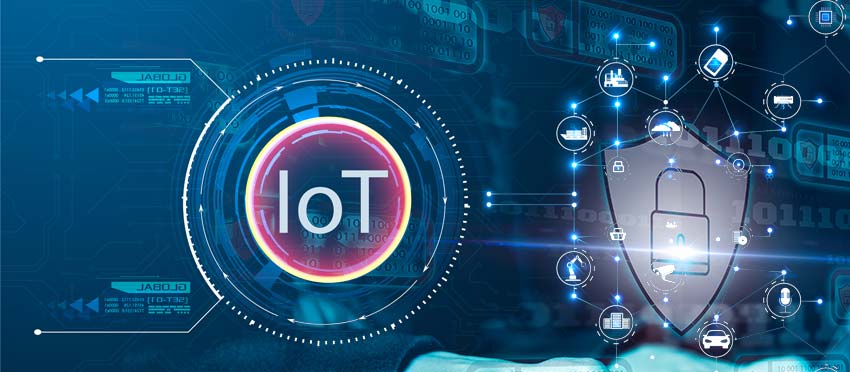
02 Dec MicroAI Security™ – IoT Security Protection at the Endpoint
IoT devices are ubiquitous. It is now estimated that there are ~ 1.2 million new IoT products being activated every day. These smart devices have moved well beyond the realm of simple wearable devices for the consumer market. Connected smart devices and machines can now be found performing critical functions within virtually every industry. The manufacturing, automotive, energy, telecom, and semiconductor sectors are just a few examples of where Edge AI-enabled assets are delivering mission-critical operational and business advantages.
This massive proliferation of smart devices and machines has not come without challenges. Perhaps the biggest challenge has been security. In many cases IoT ecosystems have been designed and deployed without adequate foresight into cyber-security implications. This has exposed operations to cyber-threats that are increasingly malicious and sophisticated.
IoT Devices and Security Threats
The vast majority of IoT and IIoT (industrial internet of things) assets have no inbuilt security. In addition, due to limited computing power, most devices are not equipped to onboard additional security features. This creates a prime breeding ground for device penetration and spread of destructive cyber-attack. The sheer volume of unprotected devices and machines within a large IoT ecosystem makes it extremely difficult to track and protect data.
Specific IoT Threats
IoT assets are especially prone to Zero-Day cyber-attack. What is a Zero-Day attack? Simply put, it is a covert attack that remains hidden until a predetermined activation date and time. They are typically undetected until assets and their data have already been compromised.
Zero-Day attacks come in several forms, including the following:
- Ransomware: A malware attack in which hackers hijack critical data and demand ransom for its return. Ransomware can impact the entire asset ecosystem or be applied to individual assets or data files. In many cases operational and asset data is permanently compromised.
- Phishing: Hackers use fraudulent messaging to entice the targeted victim to reveal sensitive asset or data information. Hackers use this information to gain access to connected devices and machines and the data they produce.
- Distributed Denial of Service (DDoS): Hackers penetrate an IoT network and disrupt the flow of data between the devices and machines within that network. This can overwhelm an entire IoT ecosystem and prevent the access and transmission of data critical to system performance. DDos attacks can impact hundreds/thousands of critical assets.
- Cloud-Native Breach: Cyber-criminals penetrate an IoT cloud environment and steal data that is being transmitted to the cloud. Access is gained by exploiting vulnerabilities within the cloud deployment and then hijacking asset data during the transmission and/or storage phase.

Endpoint Security Defined
To better protect IoT devices and machines from cyber-attack, many asset-intensive operations are now implementing endpoint security solutions. These Edge-AI solutions enable new security protocols to be embedded where they are needed the most—right at the device endpoint. Key characteristics of endpoint security include the following:
- Asset-centric: AI-enabled security algorithms are deployed directly into the microcontroller (MCU) of the device or machine. This effectively eliminates problems associated with latency, lack of customization, and real-time feedback associated with traditional cloud and network dependent solutions.
- Faster onboarding: Endpoint security allows developers to quickly onboard and validate security protocols into individual assets within the IoT ecosystem. An entire IoT security system can be designed and deployed much faster than was previously possible.
- More flexibility: Unlike legacy solutions, endpoint security provides the enterprise with increased flexibility in the construction of its IoT security program. AI-enabled security can be applied to all IoT assets or limited to those assets that are mission-critical.
- Improved scalability: Once security protocols have been validated on a limited number of assets, the endpoint-based solution can be quickly scaled to include a larger number of devices and machines. This eliminates the risk associated with deployment of too large a security solution at the onset.
- Reduced cloud dependence: An endpoint security solution allows all critical data to be collected, synthesized, and analyzed locally (at the asset level). Critical data is not exposed to cloud transmission and storage, significantly reducing its exposure to cyber-attack.
A Platform Approach to Device Security
MicroAI Security takes endpoint security to the next level of effectivity by combining all AI-enabled security elements into a single, localized, platform. This eliminates the problem of having to combine disparate cyber-security elements to produce a functioning system. MicroAI Security™ provides a more holistic approach to endpoint security enablement. Distinct advantages of this approach include:
- Asset-centric security: Security algorithms embedded into the MCU or MPU of the device or machine provides endpoint protection against Zero-Day attack.
- Customizable algorithms: Ability to customize security protocols on an asset-by-asset level to accommodate specific conditions for the device or machine.
- Quicker alerts and mitigation: Localized, asset-specific, security that provides quicker notification of security breach and faster activation of mitigation actions.
- Local control of asset data: Processing critical data at the endpoint eliminates security risks associated with cloud processing – more secure and more cost effective.
MicroAI Security™ provides IoT asset-intensive operations with a new Edge-native AI approach to security. Companies within the manufacturing, telecom, energy, automotive, and semiconductor sectors will be able to provide more robust security for their mission-critical assets.

